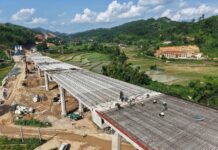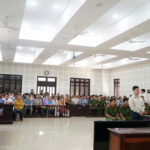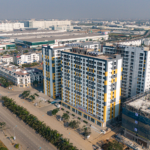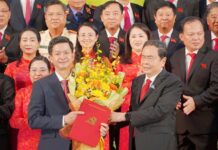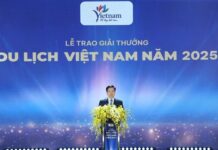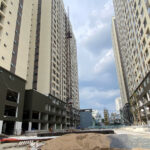On June 16, the National Assembly voted to adopt a resolution amending and supplementing the 2013 Constitution, with a 100% approval rate from attending delegates.
The resolution comprises two articles and takes effect immediately. Prior to the vote, the National Assembly Standing Committee presented a report explaining the draft resolution’s revisions, elaborating on the feedback received from the public, sectors, and levels of government. Over 280 million opinions were contributed regarding the resolution’s contents, demonstrating the people’s keen interest, agreement, and sense of responsibility towards significant national matters, as stated by Mr. Nguyen Khac Dinh, Vice Chairman of the National Assembly.
Notably, Article 110, Section 1 of the newly issued resolution stipulates: “The administrative units of the Socialist Republic of Vietnam are organized into two levels, including provinces and centrally-affiliated cities, and administrative units below the provincial and centrally-affiliated city levels as prescribed by law.”
This particular content sparked diverse opinions during the consultation process. The Committee’s report revealed that the majority of feedback expressed agreement and positive evaluation of the amendment regarding administrative units in Article 110, Section 1.
Some differing opinions suggested explicitly including communes, wards, and special districts within the Constitution’s definition of administrative units below the provincial and centrally-affiliated city levels.
In response, the Committee argued that overly specific definitions of administrative units in the Constitution might lead to frequent amendments as the organization of these units continues to evolve. They concluded that the Constitution should only affirm the two-level local government model, leaving the naming of specific administrative unit types to be determined by law to accommodate developmental needs in each period. This conclusion was drawn from practical lessons learned during previous constitutional amendment processes.
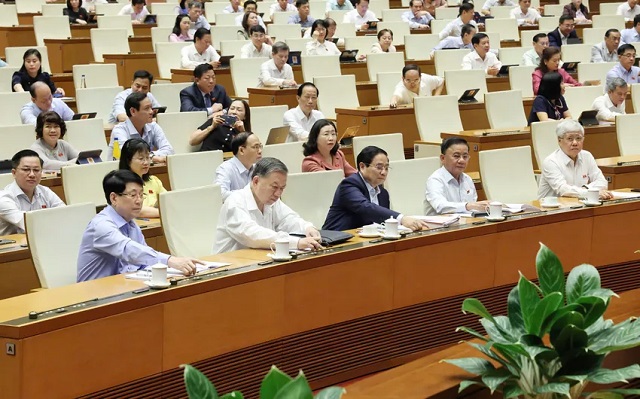
Additionally, the Committee addressed concerns about providing a constitutional basis for the National Assembly to define the characteristics of administrative-economic special units, ensuring transparency and preventing arbitrary decisions in local government design.
They clarified that the “special” nature of administrative-economic special units lies in their potential deviation from typical territorial administrative units (provinces, cities, communes, wards, and special districts). Even among these special units, there may be variations in scale, nature, management level, and applicable policies to align with distinct features, objectives, priorities, and development orientations of each location.
Drawing from international and regional experiences, the Committee asserted that numerous models of zones, centers, and areas have been established by countries to pursue economic development or other special objectives. They maintained that the Constitution should refrain from prescribing this content in a rigid framework based on specific criteria or standards without sufficient scientific and practical grounds. Instead, it should be left to the Government to propose and the National Assembly to decide on these matters when establishing each administrative-economic special unit, provided that the necessary conditions are met.
Mr. Dinh also shared that following the adoption of the resolution amending and supplementing the 2013 Constitution and the Law on Local Government Organization (amended), the National Assembly Standing Committee issued 34 resolutions on the reorganization of communal-level administrative units. Along with the National Assembly’s Resolution 202/2025 on the reorganization of provincial-level administrative units, these actions provide a comprehensive and synchronized legal basis for all administrative units nationwide to uniformly implement the two-level local government model. The newly formed administrative units after the reorganization officially commenced operations on July 1, 2025.

On June 16, with a 100% approval rate, the National Assembly adopted the resolution amending and supplementing the 2013 Constitution. Photo: NT
Mr. Dinh further informed that initially, the Committee for Drafting Amendments to the 2013 Constitution proposed amendments to 8 out of 120 articles and clauses of the 2013 Constitution. However, after carefully considering the valuable and well-founded opinions, logical arguments, and suggestions from agencies, organizations, the public, experts, scientists, and National Assembly delegates, the Committee decided to adopt amendments to only 5 out of 120 articles and clauses, retaining 3 articles as they are currently implemented in the existing Constitution.
The unchanged contents include provisions on seeking public opinions when establishing, dissolving, merging, dividing, or adjusting boundaries of administrative units; the definition of “local government” and “local government levels”; and the right to question of People’s Council delegates (Article 115, Section 2).
REPORTERS GROUP
– 08:22 16/06/2025
“Vietnam: Securities Fraud Results in Life Imprisonment for Chairman and Director Convicted of Embezzling over a Hundred Billion Dong”
The total amount embezzled was a staggering 139 billion, and the two accused individuals used these illicit funds for a range of personal investments, including stock market speculation, lending, pawnshops, bank deposits, and private businesses. Unfortunately, their ventures did not bear fruit, resulting in losses or meager profits that fell far short of covering the promised interest payments.
A New Wave of Social Housing: 1,400 Homes to be Built in Haiphong
The Haiphong Department of Construction has announced its approval for a social housing project, comprising 1,388 units, in the Tan Truong Industrial Park.














